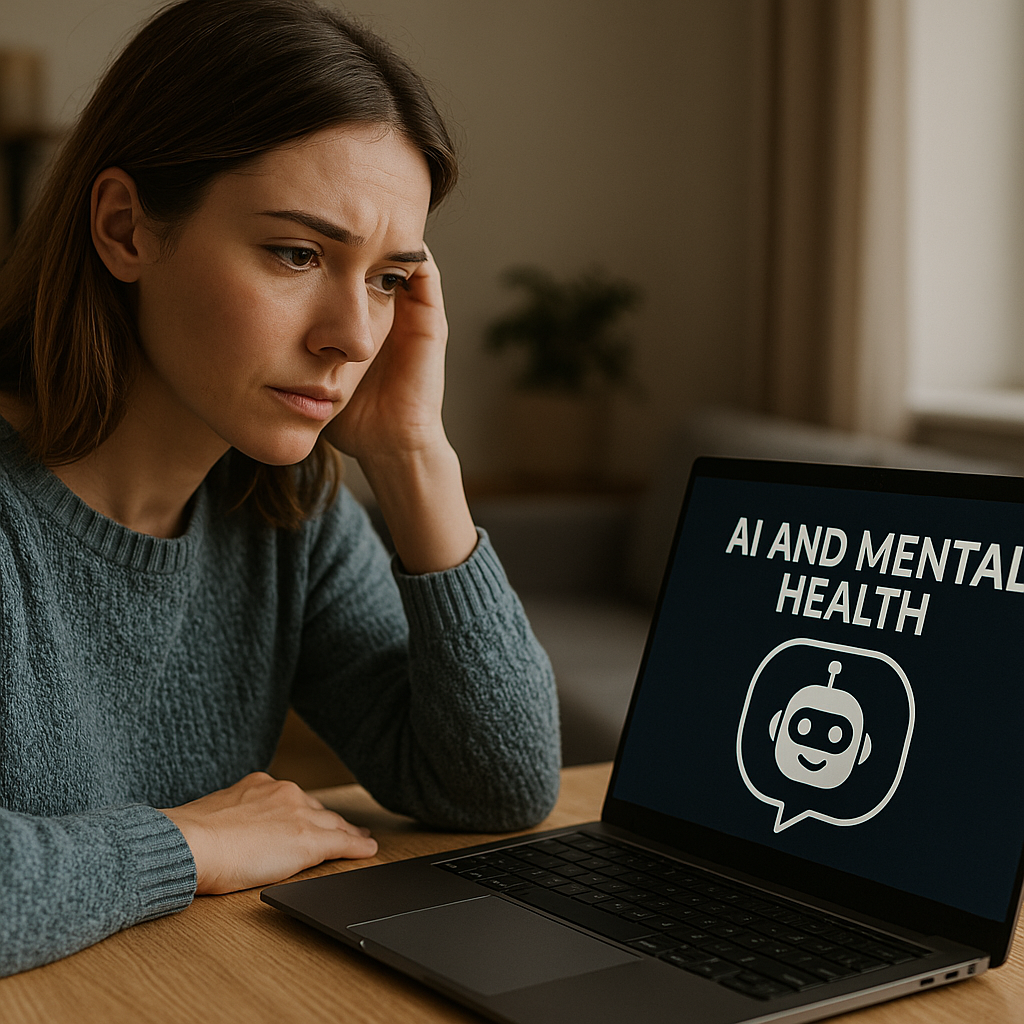Artificial Intelligence (AI) has rapidly evolved beyond its initial applications in finance, marketing, and manufacturing. One of its most promising — yet complex — frontiers is mental health. With rising global awareness of mental wellness and an increasing demand for accessible care, AI is emerging as a tool that could potentially reshape the way we understand, diagnose, and treat mental health conditions.
However, while the opportunities are vast, there are also significant challenges. In this article, we’ll explore both the promise and the risks of using AI in mental healthcare.
Why Mental Health Needs Innovation
Mental health issues affect hundreds of millions of people worldwide. From anxiety and depression to more severe conditions like bipolar disorder and schizophrenia, the need for professional help continues to outpace the number of trained therapists and clinicians available.
According to the World Health Organization (WHO):
- Over 280 million people globally suffer from depression.
- Mental health services are often underfunded and overburdened.
- Access to care is limited, especially in rural and low-income areas.
AI offers a potential solution by increasing accessibility, reducing stigma, and helping healthcare providers deliver more efficient and personalized care.
How AI Is Being Used in Mental Health Today
1. Chatbots for Therapy and Emotional Support
AI-powered chatbots like Woebot, Wysa, and Tess are designed to provide on-demand emotional support. These bots use natural language processing (NLP) to understand user inputs and respond with therapeutic techniques based on cognitive behavioral therapy (CBT).
Advantages:
- Available 24/7
- Low-cost or free
- Reduces the barrier to seeking help
Limitations:
- Not a substitute for human therapists
- May struggle with complex or crisis-level issues
2. Mood Tracking and Predictive Analytics
AI systems integrated into mental health apps can analyze patterns in user behavior, voice tone, and text to predict mood changes or emotional states.
Examples:
- Detecting early signs of depression through voice analysis
- Predicting anxiety levels based on sleep and movement data
- Flagging potential manic episodes in bipolar disorder
These predictive models can provide early warnings and help clinicians intervene sooner.
3. Virtual Reality (VR) + AI for Exposure Therapy
Combining AI with VR allows therapists to customize exposure therapy for patients with PTSD, phobias, or social anxiety. AI algorithms adjust scenarios in real time based on user feedback and physiological responses.
Benefits:
- Safe, controlled environments
- Personalized and scalable treatment
- Can reduce therapy duration
4. AI in Mental Health Diagnostics
Machine learning models trained on medical records, genetic data, and behavioral information can support diagnosis by identifying patterns too complex for the human eye.
Potential uses:
- Classifying mental health conditions with high accuracy
- Differentiating between similar disorders
- Recommending personalized treatment plans
However, diagnostic use remains controversial due to risks of misclassification or algorithmic bias.
Ethical and Practical Challenges
1. Privacy and Data Security
Mental health data is incredibly sensitive. AI models rely on large datasets — often collected from apps, wearable devices, or clinical notes — which raises significant concerns about:
- Informed consent
- Data leaks
- Surveillance
Clear privacy policies, encryption, and ethical data practices are essential.
2. Bias in Algorithms
If training data is skewed toward certain populations (e.g., Western, white, middle-class), AI tools may fail to serve diverse users effectively. This can lead to:
- Misdiagnosis in underrepresented groups
- Cultural insensitivity
- Reduced trust in AI solutions
To avoid this, datasets must be inclusive and models regularly audited for fairness.
3. Lack of Human Empathy
AI can simulate empathy, but it cannot feel it. For many users, especially those dealing with trauma or grief, the absence of a truly empathetic human can limit the effectiveness of AI-driven interventions.
That’s why many experts recommend using AI to assist — not replace — therapists.
4. Regulation and Clinical Validation
There are currently few international standards for validating AI in mental health. Without proper regulation, untested apps could:
- Provide incorrect advice
- Cause harm by failing to detect emergencies
- Erode user trust
To mitigate these risks, AI tools must undergo clinical trials and comply with medical device regulations where applicable.
Promising Future Use Cases
Despite these challenges, researchers and developers are actively exploring new frontiers, including:
- Digital twins of patients for simulating treatment outcomes
- AI-assisted group therapy sessions in virtual environments
- Multilingual support to reach more users globally
- Real-time crisis intervention tools that detect suicidal ideation in posts or texts
These innovations suggest a future where AI acts as a reliable companion to traditional therapy, making mental healthcare more scalable and effective.
How to Use AI Responsibly in Mental Health
For individuals, therapists, and developers looking to integrate AI tools, here are some best practices:
- Choose clinically validated apps with transparent privacy policies.
- Use AI as a complement to professional help, not a replacement.
- Monitor outcomes carefully and report any negative experiences.
- Advocate for ethical standards in development and deployment.
Moving Forward with Compassion and Caution
Artificial Intelligence has the potential to democratize mental health care, making support more accessible to people around the world. But mental health is deeply human, and any attempt to automate care must be done with compassion, oversight, and ethical responsibility.
The goal should not be to replace therapists, but to extend their reach — helping millions of people receive the support they need, when they need it most.
